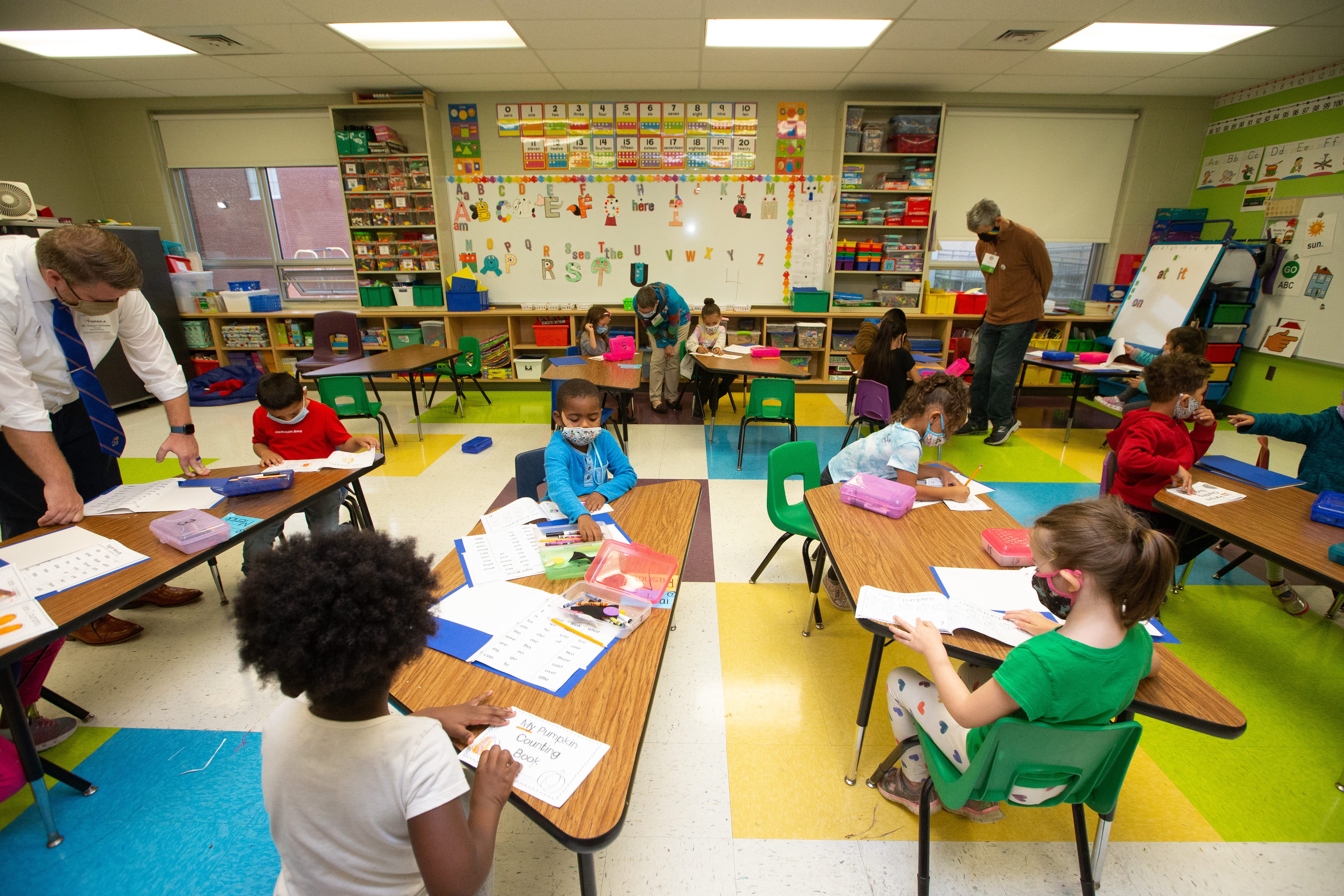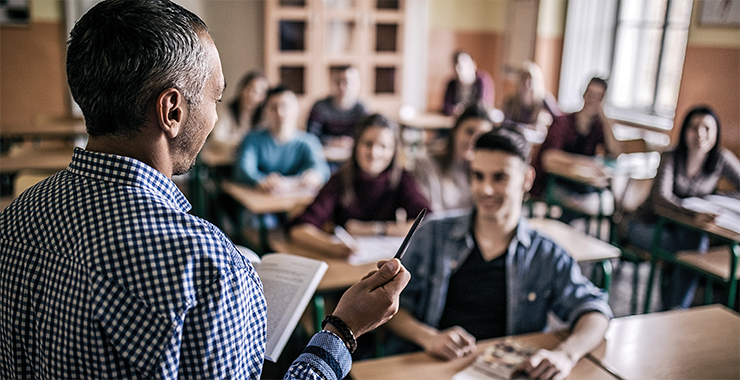Improve Your Child’s Performance with Primary Science Tuition Singapore
Improve Your Child’s Performance with Primary Science Tuition Singapore
Blog Article
A Comprehensive Guide to the Various Knowing Techniques in Main Scientific Research Guideline
The expedition of diverse discovering techniques in main scientific research instruction presents an opportunity for educators to boost pupil interaction and comprehension substantially. By examining hands-on learning techniques, inquiry-based approaches, and collaborative strategies, we can identify reliable methods that cater to different discovering designs. In addition, the combination of modern technology and distinguished guideline plays an essential duty in cultivating an inclusive environment. Nonetheless, the question remains: exactly how can these approaches be effectively carried out in the class to maximize their influence? The solution hinges on a closer evaluation of each technique and its effects for training scientific research.

Hands-On Understanding Methods
Hands-on learning methods play an essential duty in key scientific research guideline, engaging students in active exploration and testing. These approaches permit students to connect straight with phenomena and materials, fostering a deeper understanding of clinical concepts. By using manipulatives, models, and real-life experiments, teachers produce an atmosphere where trainees can observe, assume, and check their concepts.
Such methods not only boost understanding but also grow crucial thinking and problem-solving abilities. When pupils get involved in tasks like constructing straightforward equipments, planting seeds, or performing chain reactions, they are urged to ask questions and seek answers via their very own monitorings. This experiential strategy assists to demystify complicated scientific principles, making them more easily accessible and relatable.
Furthermore, hands-on learning promotes collaboration amongst peers, as students frequently work in teams to perform experiments or share findings. This teamwork not only enriches their learning experience but also establishes necessary social skills. Ultimately, integrating hands-on strategies in key scientific research direction fosters a lifelong love of knowing and curiosity about the environment, laying a solid structure for future scholastic searches in science and beyond.
Inquiry-Based Learning
Inquiry-based knowing is an instructional strategy that urges students to ask concerns, investigate sensations, and construct their own understanding of scientific ideas. This approach moves the emphasis from conventional teacher-led instruction to a much more student-centered experience, where students take the initiative in their instructional journey. By cultivating inquisitiveness, inquiry-based discovering promotes much deeper involvement with the material, permitting students to discover topics in a purposeful context.
In practice, this strategy often includes hands-on experiments, monitorings, and vital thinking tasks that align carefully with the clinical technique. Pupils are urged to develop hypotheses, design examinations, and analyze information, which cultivates essential abilities such as analytical and logical reasoning. The function of the educator in this structure is to promote exploration, assisting trainees through the questions procedure while urging independent thought and partnership.
Furthermore, inquiry-based learning nurtures a feeling of ownership over the understanding procedure, encouraging trainees to seek understanding proactively. This technique not just boosts understanding of scientific principles however also cultivates a long-lasting love for learning, gearing up trainees with the skills needed to browse a progressively complicated globe.
Collaborative Understanding Approaches
Joint knowing strategies encourage students to take part in purposeful communications with peers, fostering a common responsibility for their academic end results. In key science direction, these methods urge learners to work with each other to discover clinical concepts, fix troubles, and perform experiments (primary science tuition Singapore). By taking part in team tasks, students can take advantage of varied perspectives, see page permitting richer understanding and retention of scientific knowledge
One key element of joint knowing is the focus on communication abilities. Students should express their thoughts, pay attention actively to others, and bargain concepts, all of which are vital proficiencies in both real-world and scholastic contexts. This social communication not just enhances their understanding of scientific principles but likewise advertises teamwork and dispute resolution skills.
When students see the value of their payments within a team, they are much more likely to take possession of their understanding trip. On the whole, incorporating collective learning methods in primary science guideline cultivates a dynamic learning setting that prepares pupils for future scholastic and social obstacles.
Technology Combination in Scientific Research
The combination of innovation in main science guideline enhances finding out experiences by supplying innovative devices and sources that support various teaching methods, consisting of collaborative knowing - primary science tuition Singapore. The usage of digital systems, simulations, and interactive applications allows trainees to involve deeply with clinical principles, helping with an extra hands-on method to discovering
Digital research laboratories, for instance, allow learners to conduct experiments securely and efficiently, promoting inquiry-based knowing. These devices can simulate real-world scientific circumstances, allowing students to visualize complex procedures that would certainly be hard to reproduce in a traditional class setup. Moreover, modern technology cultivates interaction and partnership among students, as they can share searchings for and function with each other on projects through on-line systems.
In addition, multimedia discussions and academic videos can enrich lessons by accommodating varied discovering designs, making abstract concepts much more available. Data evaluation devices likewise equip students to accumulate and translate scientific data, reinforcing essential thinking skills. Generally, the calculated consolidation of innovation in primary science instruction not just boosts interaction but also prepares pupils for a technologically innovative society, furnishing them with important abilities for future scientific ventures.
Differentiated Direction Approaches
Distinguished direction strategies are vital for resolving the diverse requirements of students in key scientific research education. These methods make it possible for educators to tailor their mentor approaches to suit varying abilities, rate of interests, and discovering designs within the classroom. By using differentiated direction, educators can produce a comprehensive environment that cultivates interaction and improves understanding of clinical ideas.
One efficient approach is to use adaptable grouping, which enables trainees to team up with peers at comparable ability levels or with differing viewpoints. This technique encourages peer understanding and advertises important thinking. Additionally, using choices in tasks can encourage students, enabling them to select tasks that reverberate with their interests while still satisfying curricular purposes.
Moreover, incorporating tiered projects is an additional beneficial method. By creating tasks with varying degrees of complexity, teachers can make sure that all trainees are properly tested, no matter of their efficiency. Making use of developmental analyses to assess comprehending additional enables teachers to adjust their instructional approaches dynamically, making certain that each student receives the assistance they require.
Inevitably, executing distinguished instruction approaches in key science education and my website learning not just improves pupil understanding outcomes however likewise grows an interest for scientific research, preparing students for future academic searches.

Verdict
In summary, effective main science instruction demands a complex approach that includes hands-on discovering, inquiry-based techniques, and collective methods. The integration of innovation and distinguished guideline further deals with varied learning styles, promoting an atmosphere for exploration and crucial thinking. By executing these strategies, instructors can boost pupil involvement and comprehension, ultimately nurturing a lifelong interest for scientific research and query. Such comprehensive techniques are crucial for creating notified and interested future scientists.
The exploration of varied learning techniques in main scientific research direction provides a possibility for educators to enhance a fantastic read pupil involvement and comprehension substantially.Hands-on knowing strategies play a crucial function in main scientific research guideline, involving trainees in energetic exploration and trial and error.Inquiry-based discovering is an instructional strategy that motivates students to ask questions, examine phenomena, and construct their very own understanding of clinical ideas.Joint learning strategies empower pupils to engage in purposeful interactions with peers, cultivating a common obligation for their academic end results. In general, including collective understanding strategies in key scientific research direction cultivates a dynamic understanding atmosphere that prepares pupils for future academic and social obstacles.
Report this page